Tuesday Triage #67
- TUESDAY TRIAGE #67 by Vadim Drobinin
- On shades of sake
- Things I enjoyed reading
- 1. How I failed 5 side projects in 6 years, earning $0 by @kwcodes
- 2. Harvesting ‘true cinnamon’: The story of the Ceylon spice by @Zin10SantaFe
- 3. No time to die: An in-depth analysis of James Bond's exposure to infectious agents by Wouter Graumans, William J.R.Stone, Teun Bousema
- 4. Slow Down, Finish Faster by @bdicroce
- 5. I'm betting that you need a break by hardwarethings
- 6. Two conspiracy theories about cola by @dynomight7
- 7. Latin by the Dowling Method by wcdrutgers
- 8. How many Thursdays? by Dr. Drang
- 9. I Spent 44 Years Studying Retirement. Then I Retired by David Ekerdt
- 10. Why Did Dostoyevsky Write Crime and Punishment? by James Parker
- Things I didn't know last Tuesday
- 1. Birds don't abandon their chicks if you touch them
- 2. The Street Numbering in Florence, Italy
- 3. Carved Turnips Instead of Pumpkins for Halloween
- 4. What is the difference between rain and showers?
- 5. Aligot
- 6. Freddie Mercury and Michael Jackson didn't finish a duet song as the former couldn't tolerate Jackson bringing his pet llama into the studio
- 7. The Muffin Man
- 8. Šakotis
- 9. An original iPod was hidden in a box to prevent leaks
- 10. Moustache cup
- Book of the week
- Thank you and see you in a week!
TUESDAY TRIAGE #67
by Vadim Drobinin ¶
Your weekly crème de la crème of the Internet is here!
26.10.2021 (read in browser)
-
Intro
Whatever is on my mind this week. -
Things I enjoyed reading
Ten-ish articles I found worth reading. -
Things I didn't know last Tuesday
Ten-ish facts I didn't know when I wrote the previous edition. -
Book of the week
Some thoughts on the latest book I've read.
On shades of sake ¶
The wine harvest seasons didn't even finish, and yet here we are, on the path towards a new adventure.
I never had a chance to explore the world of sake properly. I tried some once, and didn't really understand anything. And then I tried it once more, a few laters later, and got to drink it from a small vial remembering all the movies I've seen (and obviously didn't understand anything again).
This time we got a chance to try our way through almost twenty bottles at once, and even though I rarely spit during tastings, I had to this time (and still left kind of tipsy).
Sake happened to be a wonderful drink, and also a very complex one: comparing to other fermented beverages (beer, wine, etc), it benefits from parallel fermentation: koji turns starches in rice into sugars, and yeast turns sugars into alcohol, so the potential ABV goes up from 12-13% all the way to 20-22%.
Also as the main ingredient is rice, it's also the source of flavour and premium differences. To turn brown rice into white rice you need to polish 10% off. To make a premium sake at least 50% of the outer layer is polished off, that's five times more! Supposedly, this opens up multiple layers of flavours in the finished drink.
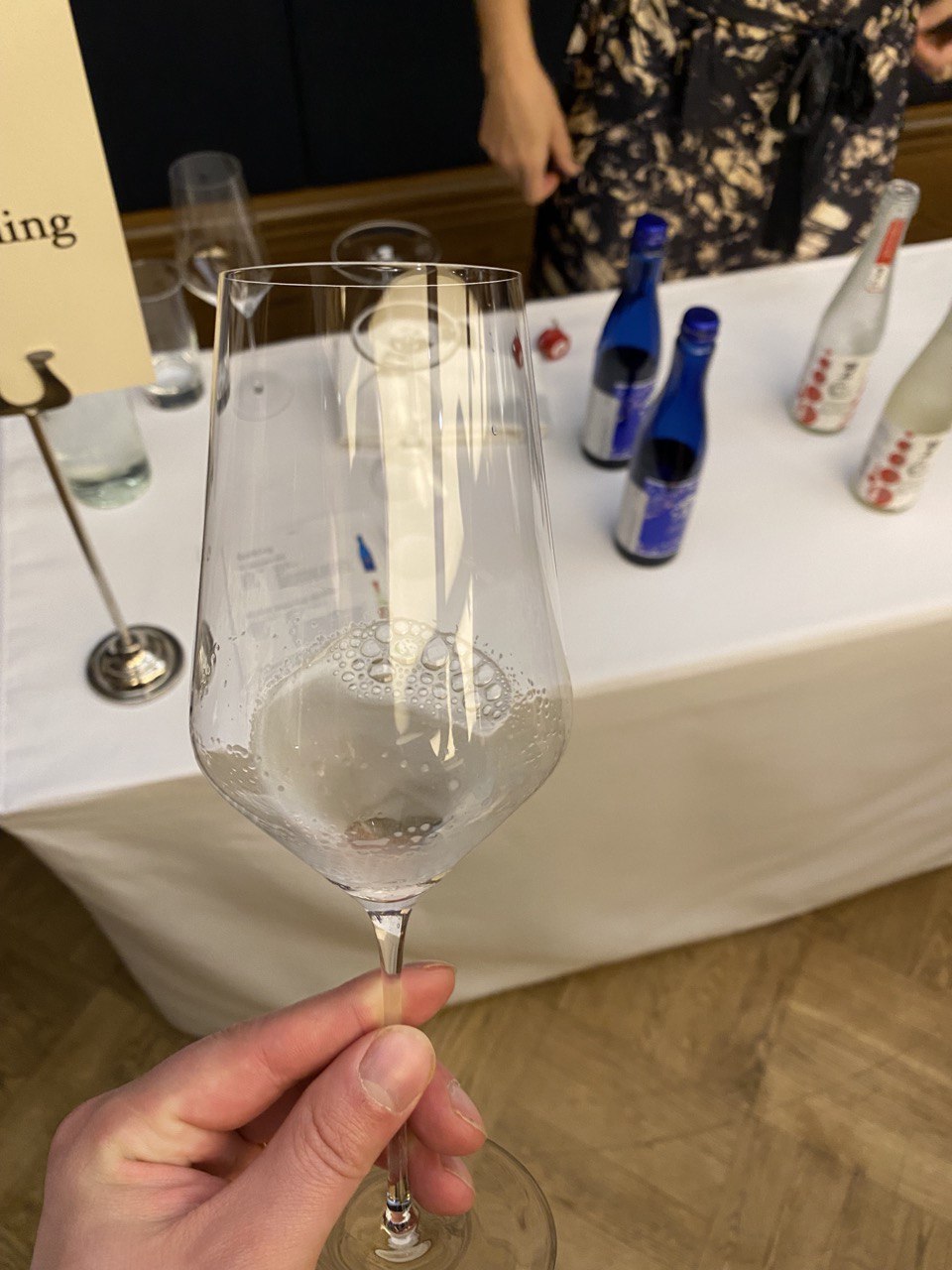
Walking through everything I've got to taste and learn is easily worthy a dedicated post, so maybe one day. For now I am just looking forward to applying the newly acquired knowledge towards mixing a few drinks with sake.
Another weekend project was dedicated to Pâte Sablée, which a sweet shortcrust dough. It wasn't my first attempt at making it, but so far was definitely the most successful:
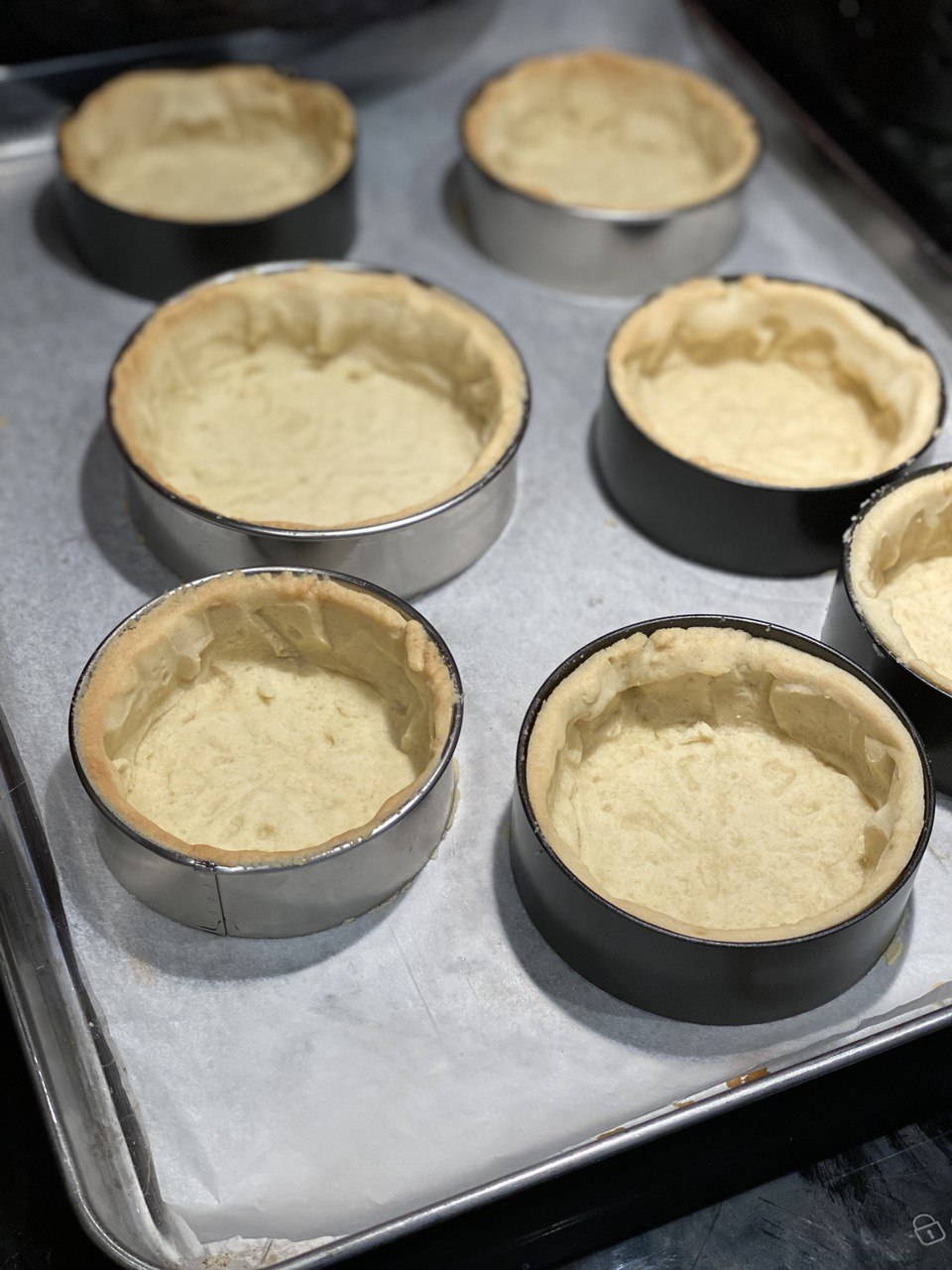
I filled them with freshly made frangipane and covered with figs, and then kept baking until golden:
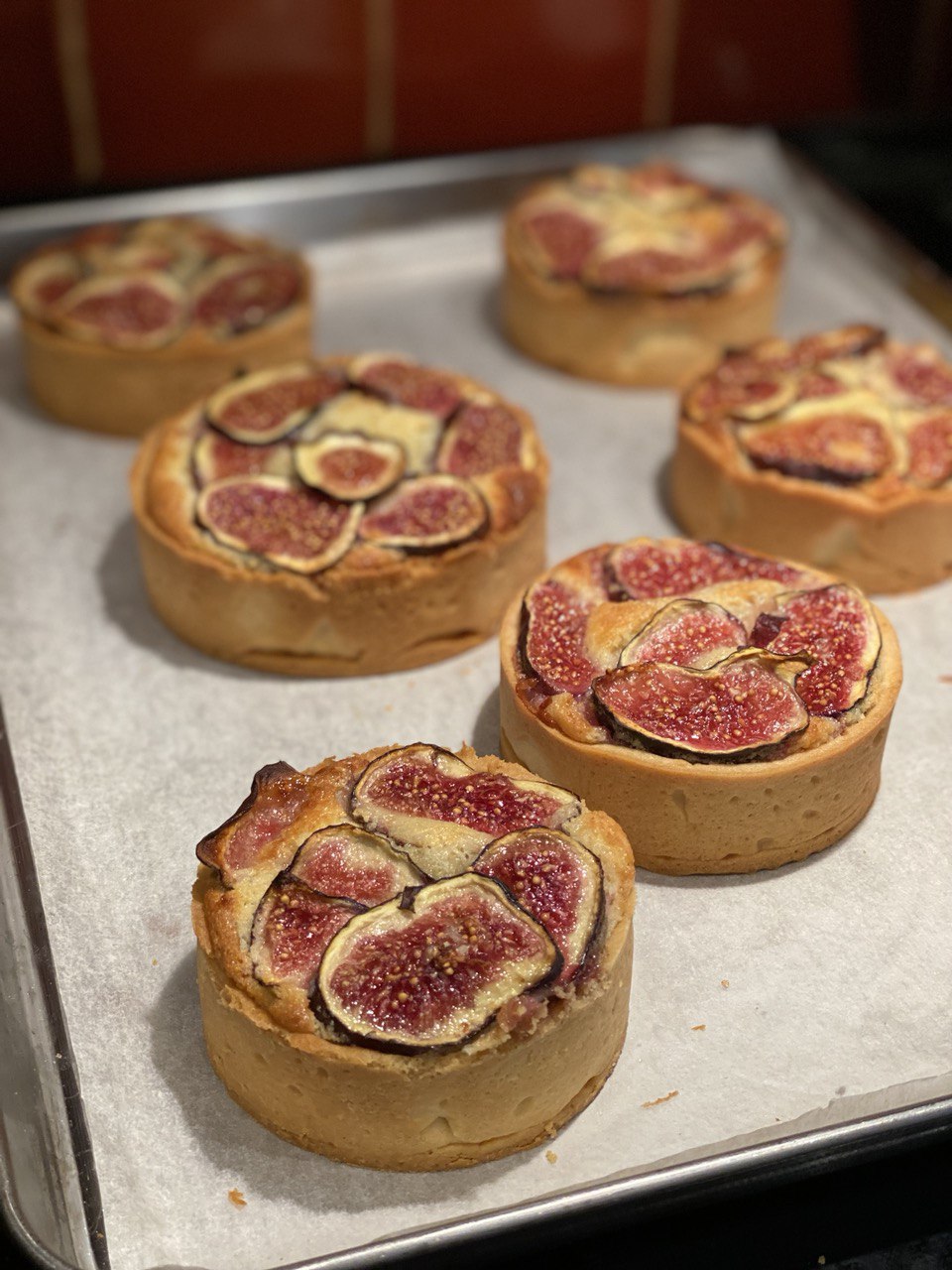
In the meantime Sasha made the ganache: Marsala wine, white chocolate, gelatine, and double cream. Our first attempt had single cream (which is nearly impossible to whip, but the recipe called just for "cream" so I thought gelatine and chocolate might keep it together: they didn't), but eventually we got the right consistency.
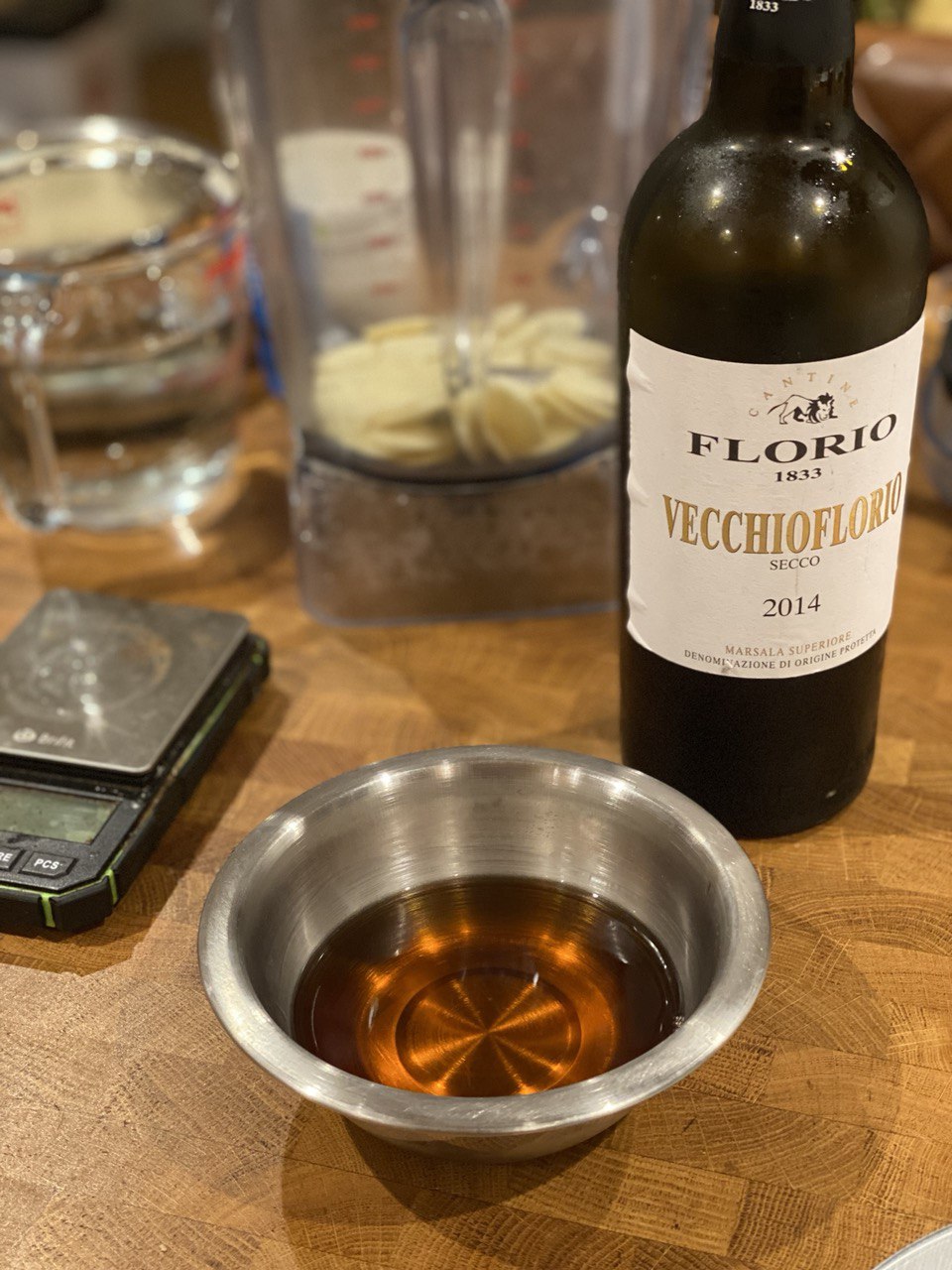
For the garnish I minted coins with by initials (using a letter press chilled in a freezer and tempered chocolate).
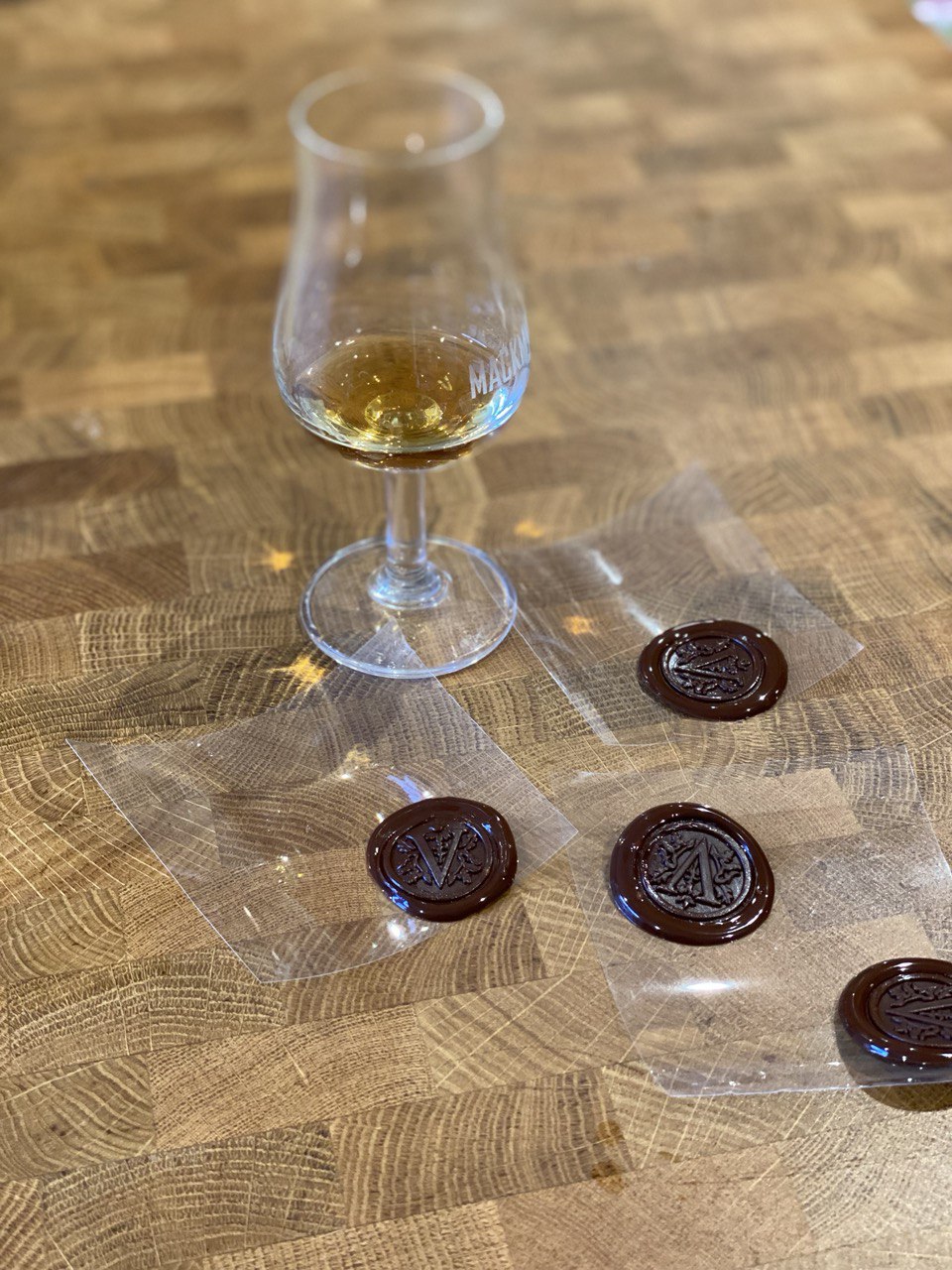
The first attempt at plating relied on the first version of ganache: with less fat but xanthan gum to make it thicker.

The second attempt got some more texture to it. Both were delicious.
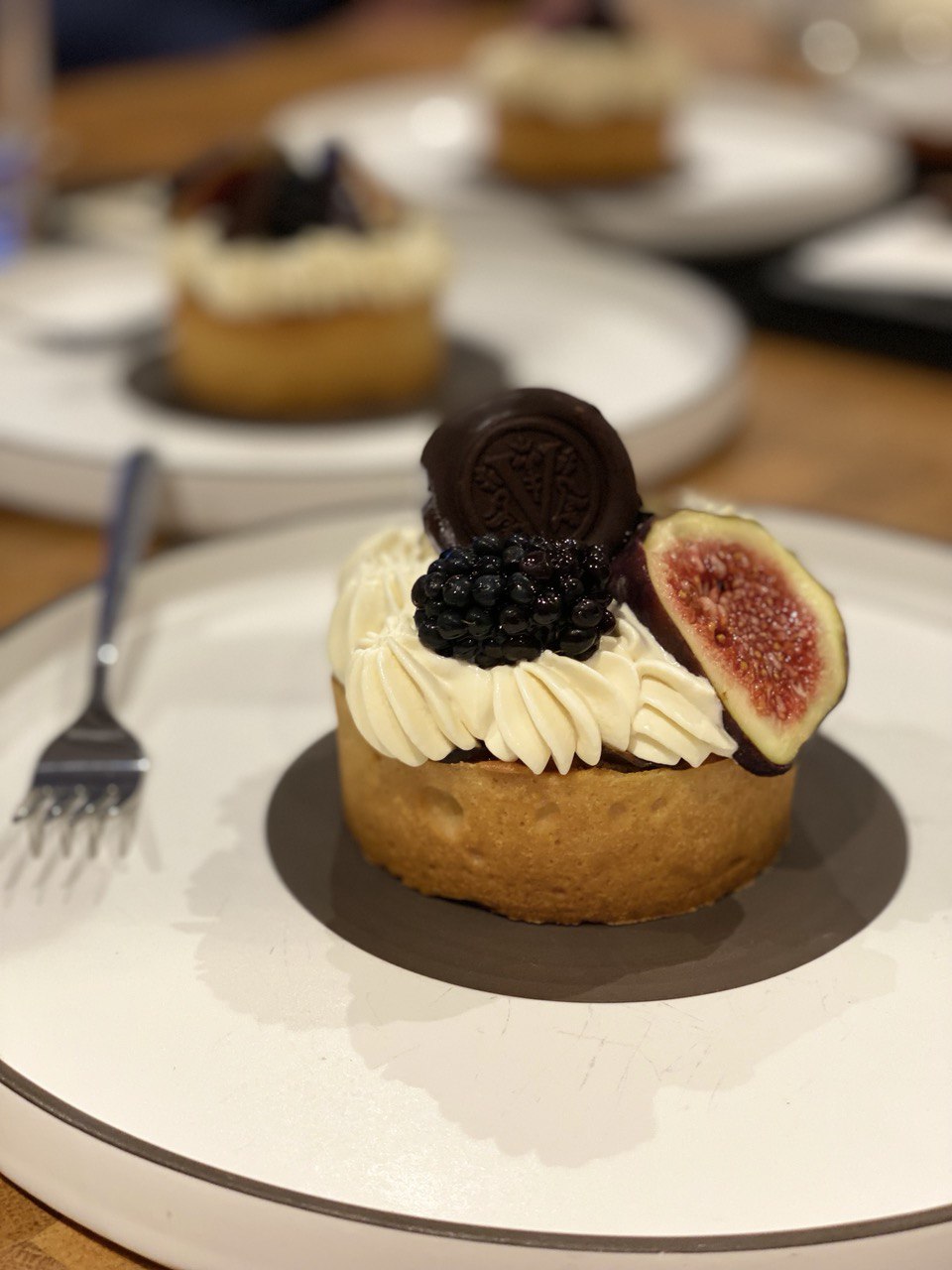
And last but not least, the weather was calling for some roasted meat. We have new butchers in the neighbourhood, so lamb saddle it is:
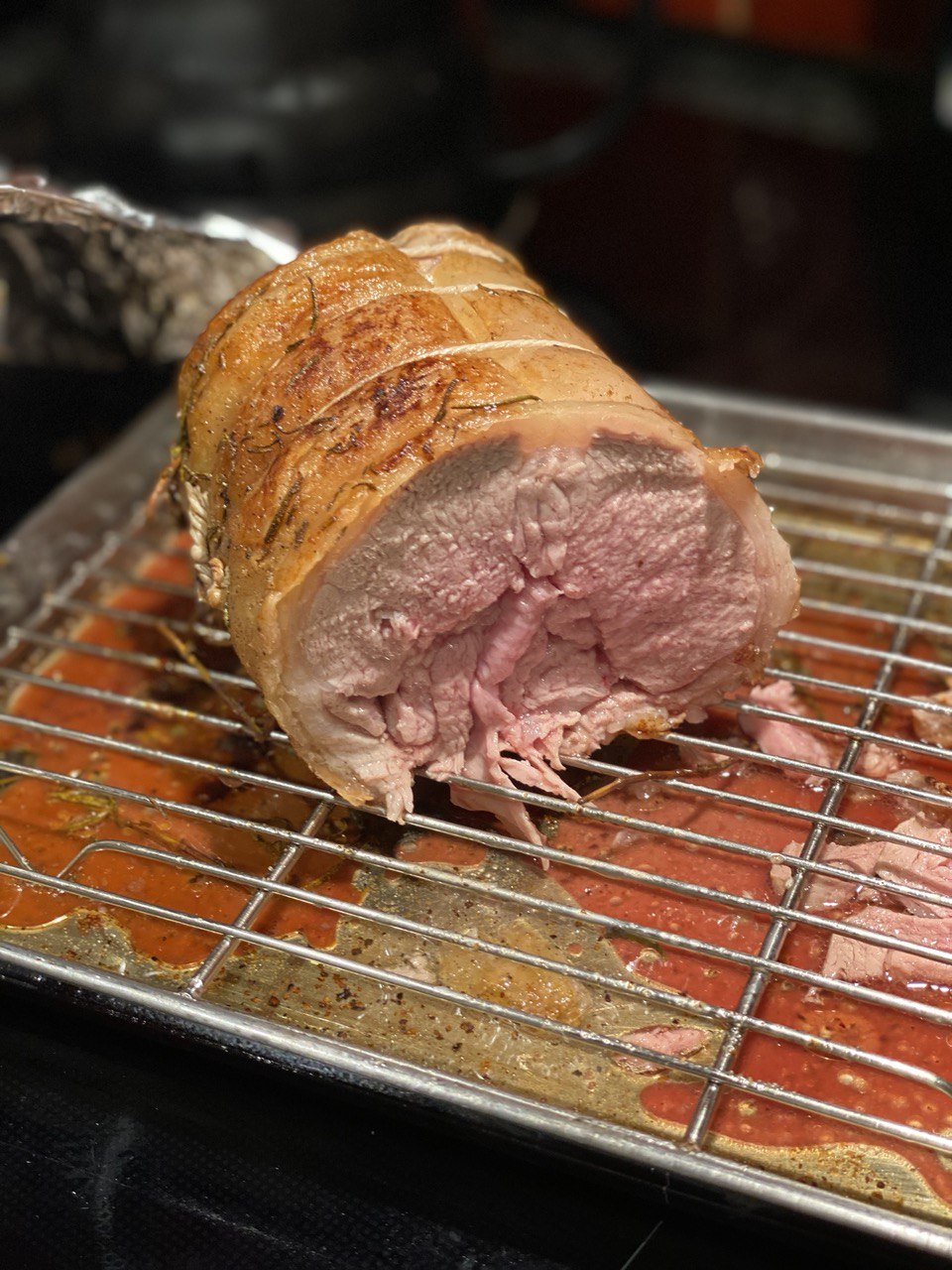
To me that's one of the stamples of local cuisine, and one of those dishes you can't really get tired of.
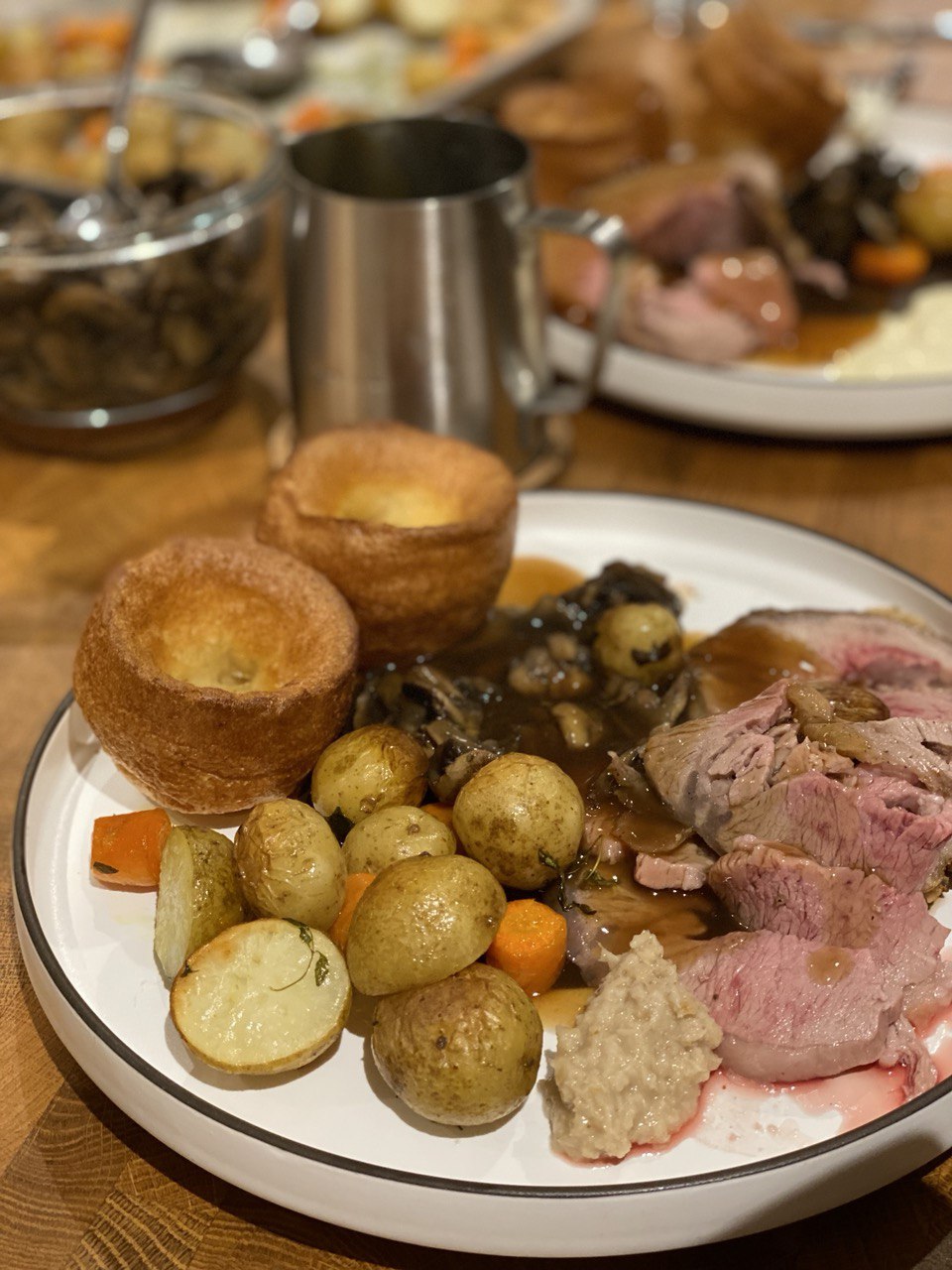
(can't wait to make a Beef Wellington for Christmas)
Things I enjoyed reading ¶
1. How I failed 5 side projects in 6 years, earning $0 by @kwcodes ¶
It's very easy to forget that behind any success story there are hundreds of failures, usually by some other people. Most stories written are not about failures, as people tend to avoid sharing them.
The author is doing quite the opposite, and this is great: not every side project brings millions, not every startup becomes a unicorn, but sometimes lessons learn are worthy of it anyway.
First of all, when deciding about the next project, I need to choose the smallest idea possible that can be developed by one person. Cut the scope as much as possible.
Estimate the time needed for the MVP. It shouldn’t take more than 3 weeks, assuming having a day job and working on the project only in my free time. If the estimation is higher, try to find out the quickest way to develop the MVP. There are many no-code tools that might speed up the development.
This is a great advice too: trying to polish everything to perfection means you just chase windmills, while instead you could actually get some product into the wild and learn from users' feedback instead of making assumptions.
2. Harvesting ‘true cinnamon’: The story of the Ceylon spice by @Zin10SantaFe ¶
This isn't the first article about cinnamon I am linking to, but probably the most detailed out the ones I've read on the peculiarities of actually peeling the bark and then grading it based on the thickness of quills.
For harvesting, farmers cut down the branches of cinnamon trees at an angle, which allows cinnamon bushes to regrow, Lakshith says. Young and tender twigs are thrown away. Once branches are soaked in water and are moist enough, peelers remove the outermost layer of the cinnamon bark. To produce thin cinnamon quills, they spend hours stripping off the inner bark of the cinnamon branch in sheets.
3. No time to die: An in-depth analysis of James Bond's exposure to infectious agents by Wouter Graumans, William J.R.Stone, Teun Bousema ¶
I am slightly disappointed no one published a similar paper before, but here we go: the authors watched all James Bond movies and comment on his exposure to harmful behaviour, activities, chemicals and so on, trying to understand if there is anything particularly interesting we could learn from one of the greatest spies.
An often-overlooked health concern for Bond is his level of hydration. Alcoholic beverages, shaken or stirred, do not prevent dehydration, which is a major concern given the extremes of physical activity he goes to, often in warm climates. On only three occasions was Bond observed drinking non-alcoholic drinks: orange juice [4], coffee [3], and salt water [9], of which the latter is particularly unhelpful in maintaining fluid balance.
Check out the full paper for more thoughts on jabs he misses before traveling, dressing attire unsuitable for the level of sun exposure he gets, and many more. Kind of made me consider watching the first twenty movies (which I've never seen thinking the only decent things from that century are stored in wine barrels).
4. Slow Down, Finish Faster by @bdicroce ¶
Out of many things I have to say about software development, here is one of the most important ones:
In short, don’t start the work unless, and until all the variables are known…as much as possible. Look at it this way: how would you feel working on a 1,000 pieces Lego or puzzle, and just when you’re about done, you realize that there’s one piece missing. Or maybe two. Or three. Would you say that the Lego or puzzle is complete? I wouldn’t. I’d be frustrated. It means that I wasted time and energy that I could’ve directed somewhere else. Sure, you might say “Well, it’s 98% done”. But I don’t want a 98% done Millennium Falcon Lego. I want the whole thing. Why? Because it’s supposed to be whole. It’s that simple.
A good engineer solves problems, but most of the time the problem is not communicated properly: it is scattered across specifications, designs, documentation, OKRs, charts, and statistics. Any single discussion touches some of the sides to the problem, but almost never covers them all, so all parties involved are missing out on the opportunity to align their perspectives.
Solving a problem is not always about writing code – code is just a tool – it's about changing the perspective in such a way everyone gets to see the whole picture, and then removing obstacles if someone (not necessarily the user) is still missing out.
And that starts with the communication and asking questions.
5. I'm betting that you need a break by hardwarethings ¶
The title might be relatable albeit misleading, but I honestly enjoyed taking a break from news and stories and research papers and just spend a few minutes reading about tomatoes (literally):
I’ve been reading a whole lot about tomatoes, particularly how they are transported from the North to the South of Nigeria. You see, tomatoes are quite subject to decay, only staying good for a couple of days outside of cold chain storage. As many transporters can not afford that they take a huge loss from the amount that is loaded unto the trailers to the amount that gets delivered to markets in the South.
This is actually one of the main reasons behind my weekly newsletter: taking a break from what I do for the rest of the week is not only refreshing but also is a great chance to sum up thoughts and ideas.
6. Two conspiracy theories about cola by @dynomight7 ¶
I grew up with lots of Cola copycats, but that didn't reduce the amount of myths and conspiracies about the drink (quite the opposite!). I won't be spoiling neither the two of them mentioned in the post nor the author's clear explanation of why they're not true – check it out. This point is quite interesting though:
Also, remember that all cola (including diet) is bad for your teeth, due to the acidity. If you drink it, try to do so with meals, try to use a straw, and try to drink some water after. Also, don’t brush your teeth immediately after drinking cola. The enamel on your teeth is vulnerable due to the acidity. You should wait 30-60 minutes for your saliva to repair the enamel before brushing.
The hight acidity is no surprise to me, although honestly as it doesn't taste sour I never thought of it from that perspective.
7. Latin by the Dowling Method by wcdrutgers ¶
If you're reading this newsletter for any substantial amount of time, you've probably noticed that I am a huge than of all things linguistics. I don't speak many languages (yet?) but reading about their differences or others' journeys towards mastering them is fascinating on its own.
The matter of "discipline" comes in this way. Even when you make up your mind to do your Latin every day, life has a way of intruding so that you will be tempted to miss days. There will be crises and upsets and intrusions and excitements, and your feeling will be that "missing just one day can't hurt."
It does hurt. You've got to do your Latin every day, through death and disease and accidents and heartbreak, when you're travelling and when you're at home, when you're in school and when you're on vacation.
The best way to do this is: do your Latin first thing every morning, before you do anything else. Then, no matter what happens for the rest of day, they can't take your Latin lesson away from you.
This advice works for pretty much any other language too: perseverance does wonders when it comes to learning, and sadly there are no silver bullets here.
8. How many Thursdays? by Dr. Drang ¶
Solving a problem is not always enough. Sometimes solving it elegantly is what matters, even if the problem sounds oddly specific, like how many Thursdays are in any given month.
But it nagged at me. This blog has a long history of showing calendrical calculations, and I had written a post on a similar problem (finding months with five Fridays, Saturdays, and Sundays) eleven years ago. The scripts in that post had some brute force aspects, but they also took advantage of how months are structured to filter the loops. I wanted to do something similar for the “how many Thursdays” problem.
As the result, instead of just looping through days of the month, there is a beautiful mathematical solution (which is way harder to understand than a bruteforce approach, but it doesn't really matter).
9. I Spent 44 Years Studying Retirement. Then I Retired by David Ekerdt ¶
I could probably share the link for the sake of the title's irony, but it's actually very insightful.
Instead, I’ve somewhat effortlessly and unconsciously downshifted from the self-imposed drive that was part of building a career. With retirement, that level of professional engagement has wound down and I can relax today, free of self-inflicted urgency about what’s next. Notices and messages commanding my attention still arrive at my email inbox, only now I have the unguilty pleasure, if I wish, of swiping them away.
At the same time I think that in a few decades the concept of retirement and its boundaries will be blurred by remote work, flexible schedules and many other things. There will be less and less point in appointing a date after which the option of swiping things away will turn into an "unguilty pleasure".
Judging by the article, retirement is an ultimate stage of being independent, from both society and other people, and this is what we actually manage to move closer and closer without becoming older or richer.
10. Why Did Dostoyevsky Write Crime and Punishment? by James Parker ¶
There is undoubtly a rise of attention to decent Russian writers (a few years ago the interest was only towards the indecent ones), and thus more and more modern authors are trying to decipher their motives.
They are doing it pretty good for rookies, and start with looking into writers' past:
His biography is a sequence of events for which only the adjective Dostoyevskian will really do. The Geist seems to pursue him; the Hegelian world-spirit seems to have a cruel, experimental interest in him. His mother dies of tuberculosis when he is 15. Two years later, his father perishes mysteriously, probably murdered by restive serfs. Eking out a literary career in smelly St. Petersburg, the young Dostoyevsky falls into debt and personal squalor. Also into reformist politics, which are bubbling up all over ancien-régime Russia: secret meetings, ardent manifestos.
The funny thing about Dostoyevsky is, his past never defined his writing and that's where I would challenge the author of the article. The key to understanding Dostoevsky is to realise that his writing is driven by his lack of future, which he never envisioned for himself.
Angst and misery of his characters is not his troubled past, it's his undefined future. And that stands true for most Russians.
Things I didn't know last Tuesday ¶
1. Birds don't abandon their chicks if you touch them ¶
I refuse to believe I was the only one lied to by parents and teachers, who'd claim that if you touch a baby bird dropped out of a nest, it'd be abandoned by its parents.
I think I even had nightmares of touching one by accident.
In fact, contrary to what our parents may have told us, most bird parents are unlikely to abandon their chicks over a little human fiddling. "Usually, birds are quite devoted to their young and not easily deterred from taking care of them," Chu said.
Judging by the source, birds don't even have such elaborated smell receptors to distinguish a short human touch.
2. The Street Numbering in Florence, Italy ¶
Designing cities is hard, and numbering streets is not an easy feast, but Florence, WTF?
A double sequence of street numbering exists in Florence. Shops and businesses are identified by the letter 'R' after the number. This signifies 'red'. Private residences are numbered in black. Thus a street may have two number 18's, at times at considerable distance one from the other; 18R (as in the addresses given here) is a shop or business, while 18 is a private house.
Luckily, modern buildings don't rely on that rule anymore.
Sadly, seems like it's not only in Florence, but in other Italian cities too.
3. Carved Turnips Instead of Pumpkins for Halloween ¶
First I learnt that British pupils don't really drink pumpkin juice, now I am learning that Brits didn't even bother carving pumpkins, because they had turnips. And radishes.
For protection from Stingy Jack and other apparitions, people in the British Isles began carving faces into pieces of produce—particularly turnips, but in some cases potatoes, radishes and beets. Celebrants placed lit candles inside the cavities, similar to the pumpkin jack-o’-lanterns of modern Halloween. They believed leaving the spooky carvings outside their homes or carrying them as lanterns would protect them from harm’s way while offering a flicker of light that could cut through their dark surroundings.
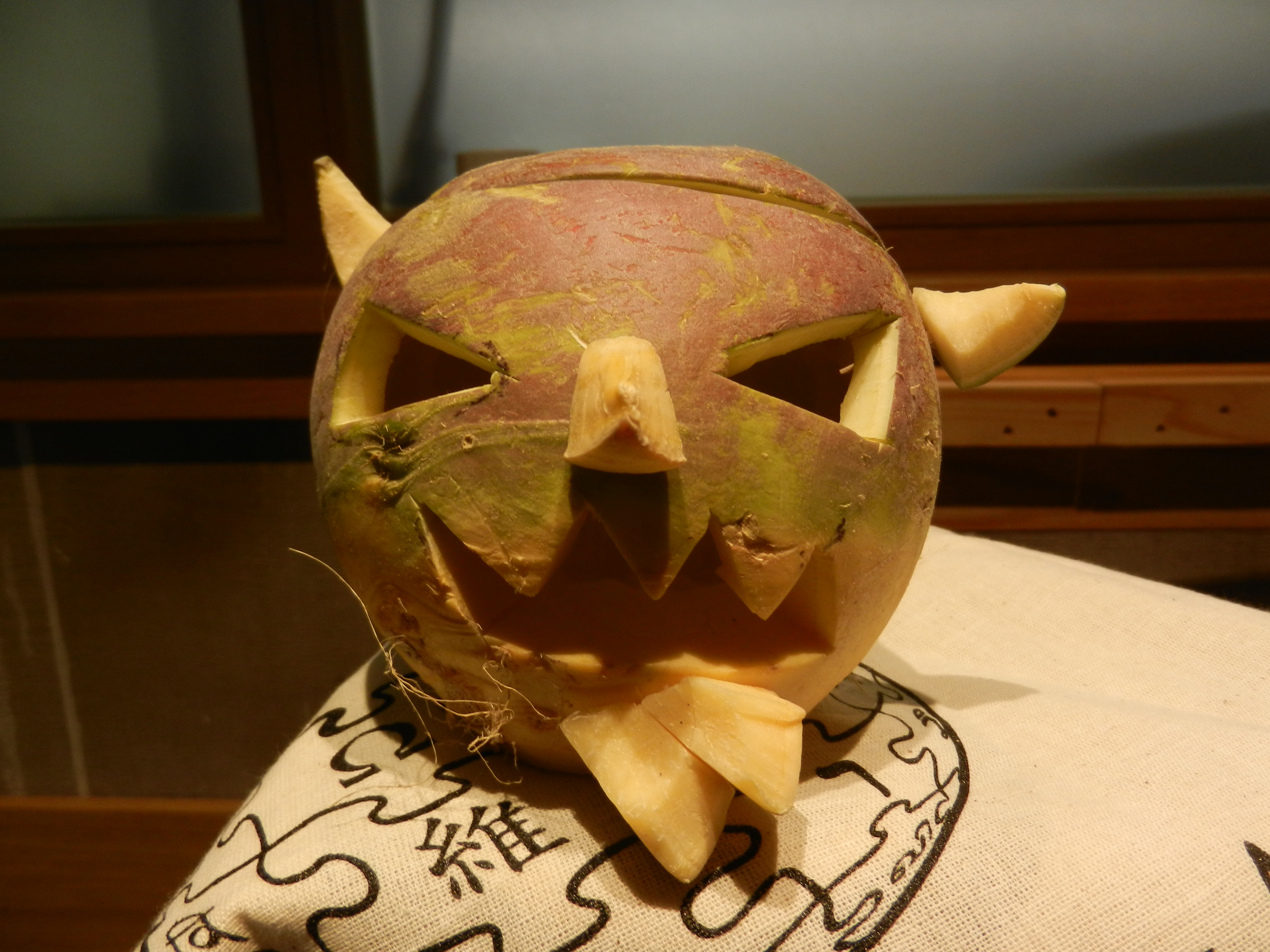
Guess someone didn't just throw tea into the water, they also had to get rid of proper veggies next.
4. What is the difference between rain and showers? ¶
After learning English for eleven years at school, and then living in the UK for almost half a decade, I finally took the effort to look up the word "showers" that Apple Weather app keeps showing to me. Granted, I kind of knew the meaning as the icon was self-explanatory, but the word kept cracking me up.
While showers are technically a type of rain, they usually fall from individual clouds you can see in the sky so the rain will be on and off, with gaps of drier and brighter weather in between. It is quite hit and miss where they occur, and this means that you could get heavy showers on and off through the day, whereas in the next town their weather stays dry all day.
Now I am scared to imagine how often I gave someone false information about the weather outside, and they went out without an umbrella...
5. Aligot ¶
Seems like I found my favourite winter dish (albeit I don't remember trying it yet):
Aligot is a dish made from cheese blended into mashed potatoes (often with some garlic) that is made in L'Aubrac (Aveyron, Cantal, Lozère, Occitanie) region in the southern Massif Central of France.

It's not too far from most Michelin-style mashed potatoes though, just swaps cheese for heavy loads of butter, but probably garlic is the secret here.
6. Freddie Mercury and Michael Jackson didn't finish a duet song as the former couldn't tolerate Jackson bringing his pet llama into the studio ¶
Who'd think these two legends had a chance to make a song together, but everything went to the ground due to a llama?
A contributing factor to the delay from the time it was recorded was Mercury's frustration over Jackson's insistence that his pet llama be allowed to attend recording sessions. According to manager Jim Beach Freddie told him "Can you get me out of here. I'm recording with a llama."
I must say, a pet llama must be really cool and probably is worthy of a missed song opportunity.
7. The Muffin Man ¶
There is a legend about a man who'd walk London streets selling muffins.
The man in question, who lived on Drury Lane in London, may have been a man whose profession was delivering baked goods such as English muffins or it may have been an impoverished beggar man (like a ragamuffin).

We don't really know if that was true, because the most only real source is a children's song, but it's too good to be lie.
8. Šakotis ¶
A new dish in my bucket list of things I probably can cook at home if I were to get very motivated:
Lithuanian šakotis or raguolis ("tree cake"; literally "branchy") is a Polish, Lithuanian and Belarusian traditional spit cake. It is a cake made of butter, egg whites and yolks, flour, sugar, and cream, cooked on a rotating spit in an oven or over an open fire.
Seems like the rotisserie on my BBQ might get another chance of being put to good use.
9. An original iPod was hidden in a box to prevent leaks ¶
Here is an image of the first iPod's prototype, courtesy of panic.com:
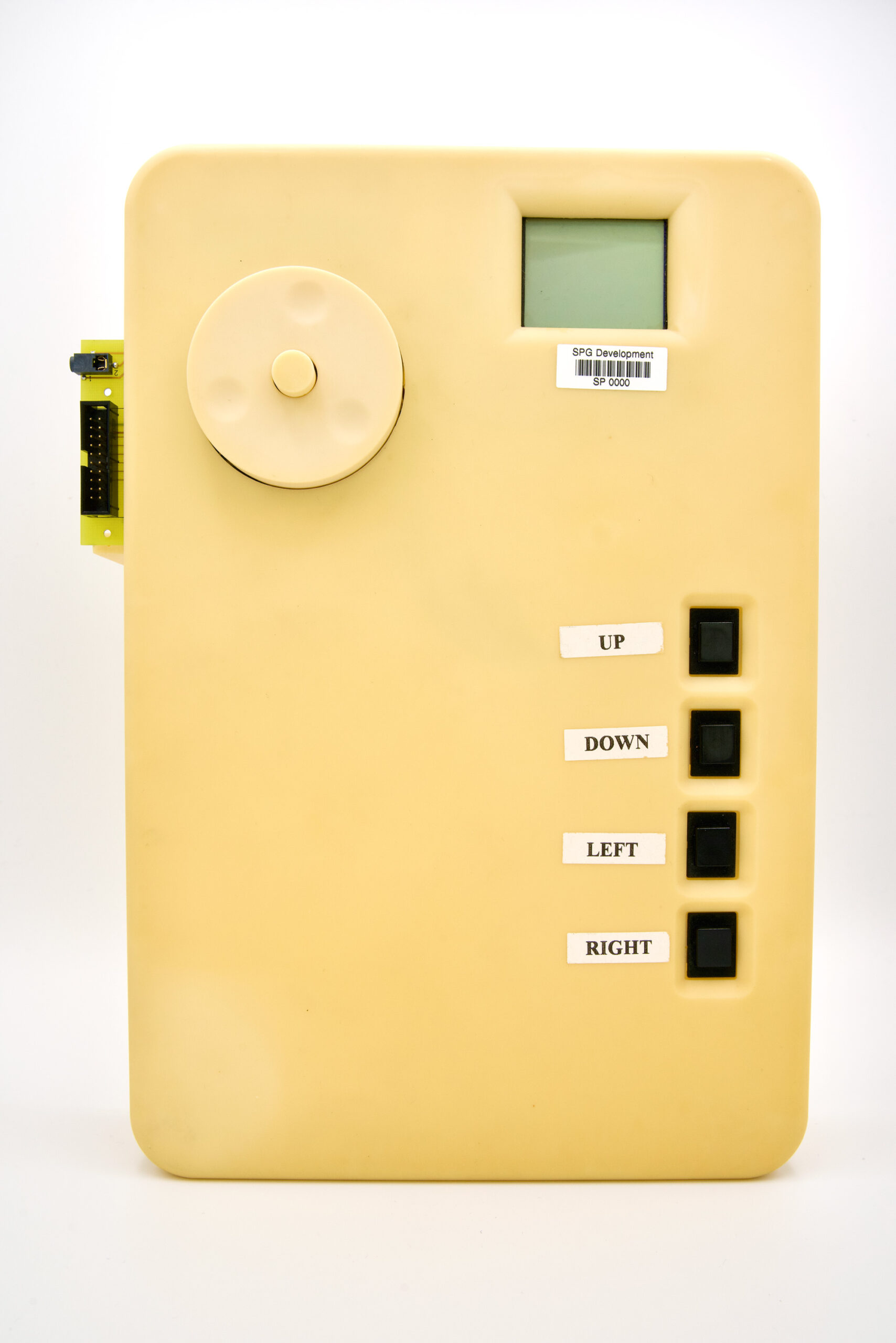
As you can see, it’s… quite large! We’ve always assumed that this mighty shell was designed to fit the large breadboards or circuit boards that were used during the earliest days of iPod development, until everything was eventually sized down to actual iPod-size. (It also has the Jobsian side-benefit of keeping the engineers in the dark about what the final device will look like.) I can’t get enough of those chunky, clunky, clicky black buttons wired up for navigation.
There are more pictures if you check out the source, but the most exciting part is that the box is pretty much empty inside, with the actual iPod being butchered into pieces to get wired to the buttons and prevent designs from being leaked.
10. Moustache cup ¶
And speaking about designs, here is a good example of balanced UI and UX:
The moustache cup (or mustache cup) is a drinking cup with a semicircular ledge inside. The ledge has a half moon-shaped opening to allow the passage of liquids and serves as a guard to keep moustaches dry. It is generally acknowledged to have been invented in the 1860s by British potter Harvey Adams (born 1835).

I am very disappointed there are no "moustache plates", or forks, or soup dishes for that matter as they would be of a great use.
At least there are cups starting from £10 on Ebay, which is not too bad given it's Victorian era more or less.
Book of the week ¶
I was proof-reading some of the facts for this week's newsletter and came across an article about one of the most famous grocery chains in the States – Trader Joe – which apparently is surprisingly effective at testing out ideas and products in the food world.
I shared a story on how their $2 wine became a best-seller a year ago – it was a good one.
So when I came across Joe Coulombe's Becoming Trader Joe, I couldn't miss the founder's stories and lessons learnt along the way.
What I tried to link was the sale of discrete products to such “Human Use.” I averred that Tide and Folger’s didn’t need any human intervention. They could be sold by machines. We have since edged closer to that as supermarkets adopt scan-it-yourself check stands. The operational theory is that the labor savings from having no checker offsets the fraudulent scanning by customers. I certainly do think that checking is an inhuman use of human beings. That’s one reason Trader Joe’s has no permanent checkers, why everyone in the store shares the burden.
Small batches of wines, Brie that was a bit over the hill; explanations of why we were able to sell Armour Dinner Classics for one-half the price of the supermarkets: these required the use of people. And for people to exploit their human potential, that took product knowledge. That product knowledge could be best attained not by “training” but by “engaging the interest” of each employee in what we sold.
Contrary to what I have expected, the book is very easy to read.
It has less anecdotes than I expected, but way more useful lessons or fruitful ideas than I thought, so that's not too bad either.
I wouldn't say it is a must-read for anyone in the food industry, but if you are thinking of scaling a business than given it a try.
Thank you and see you in a week! ¶
If you have any questions, or want to suggest a link for the next newsletter, please drop me a message on Twitter or reply to this email.
Cheers! 🍸